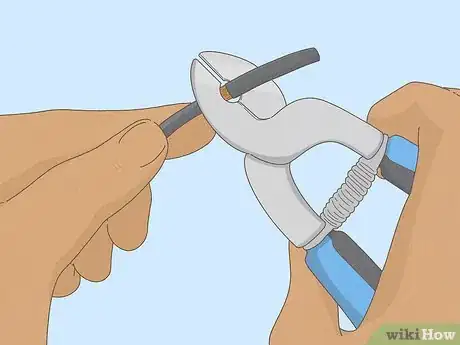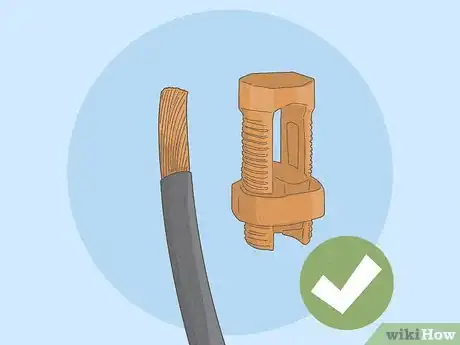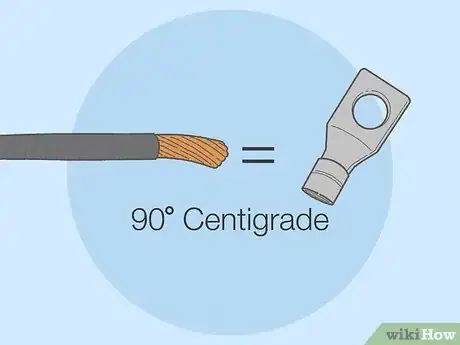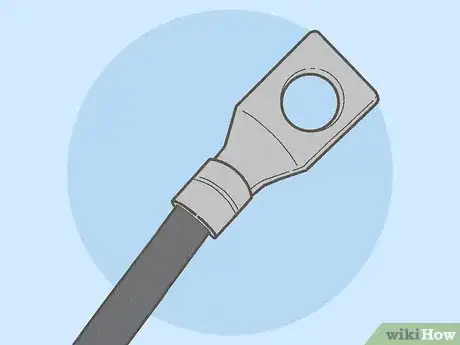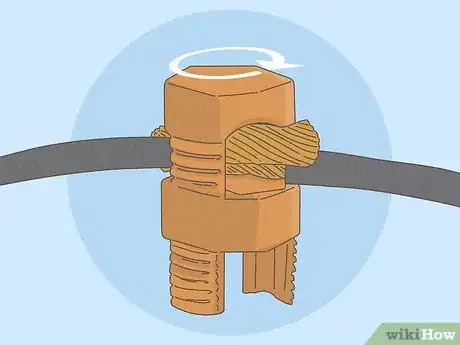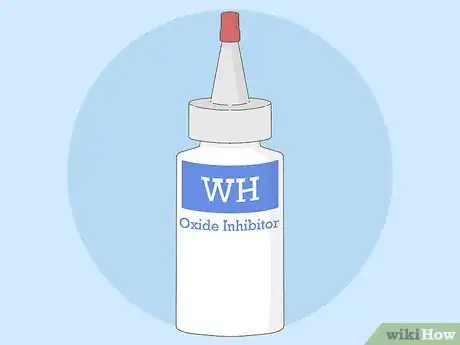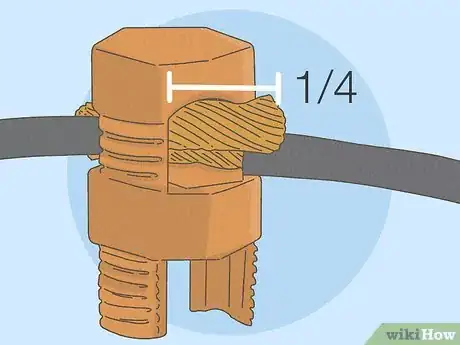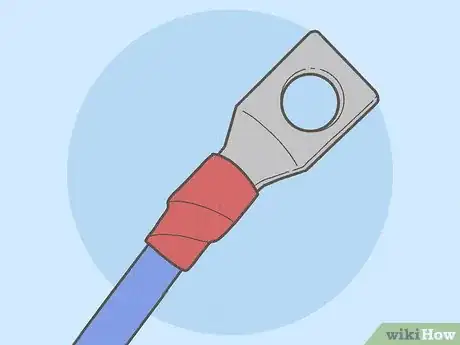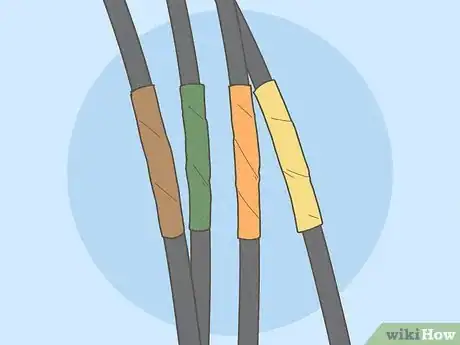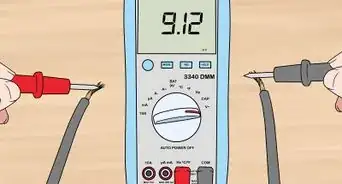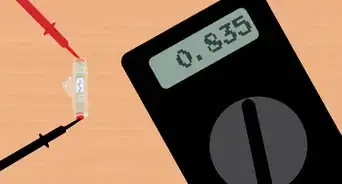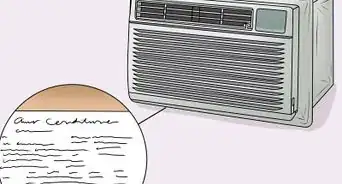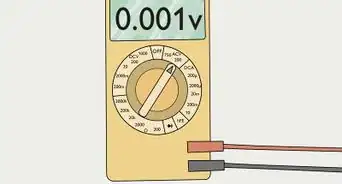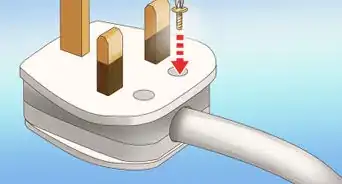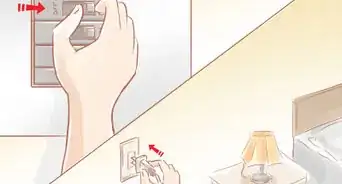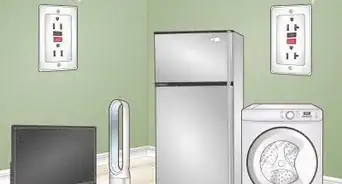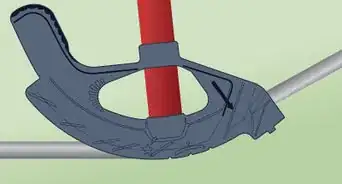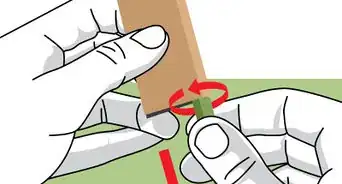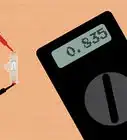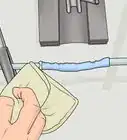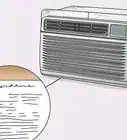X
This article was co-authored by Jesse Kuhlman. Jesse Kuhlman is a Master Electrician and the Owner of Kuhlman Electrician Services based in Massachusetts. Jesse specializes in all aspects of home/residential wiring, troubleshooting, generator installation, and WiFi thermostats. Jesse is also the author of four eBooks on home wiring including "Residential Electrical Troubleshooting" which covers basic electrical troubleshooting in residential homes.
This article has been viewed 122,421 times.
Proper electrical connections require good electrical conductivity and mechanical strength. These properties do not always go hand-in-hand. Here are some tips to make sure you've got both.
Steps
-
1Carefully remove insulation. Remove only enough as required by the connector, terminal, etc. for connection. A "strip gauge" is often provided near the terminal of devices (switches, outlets, etc.) and should be checked before striping insulation. Additionally, the packaging of wirenuts and other connectors usually indicate how much insulation should be removed from a wire or cable. It is very important not to nick the wire in the insulation striping process. The size of the wire is critical, and a nick can create a hot spot whenever the circuit is loaded. This resulting spot expands and contracts with each heating and cooling cycle, and over time, effectively loosens the connection. Removing too much insulation increases the likelihood of accidental contact with something other than intended. Accidental contact can result in arc flashes, shock, burns and even loss of life.[1]
-
2Use only connectors rated for the type wire. Connectors, terminals, lugs, etc. have a rating for the type of wire material i.e.: copper (CU) or aluminum (AL) and copper clad - aluminum. The connector will bear either the "CU" or "AL" mark. A third mark, "CU/AL" indicates the connector is suitable for either copper or aluminum. Never mix copper and aluminum conductors in a single terminal, unless it specifically designed for the mix.[2]
- These typically are a special design used to connect an aluminum and copper wire together so that a short copper jumper or pigtail may be connected to a CU rated terminal. These were common in the 70's when aluminum wiring was used to supply 15 & 20 amp circuits in residential and some commercial structures. It was learned that aluminum wire wasn't well suited for connection to the terminals on common outlets and switches.
- Use of a copper jumper connected between the screw terminal of the switch or outlet and the building's aluminum wire via special connector solved this problem. Manufacture of aluminum wire for these purposes has ceased and now aluminum wire and cable is manufactured in larger sizes for connection to an electric range, service equipment and other high current uses. Terminal ratings are for wires made of either CU (copper only) or CU/AL (copper OR aluminum but not both at the same time).
Advertisement -
3Use correct terminal temperature ratings. Once the correct CU or AL terminal has been chosen, make sure the required temperature rating of the wire is met by the terminal. A wire or cable with a 90 degree Centigrade (or C) rating may have been installed to take advantage of the higher current carrying capacity or "ampacity" rating provided over a similar cable with only a 75 or 60 degree rated cable insulation. All the terminals to which the wire will connect must meet the 90 degree C minimum rating as well, otherwise the ampacity of the wire will be reduced. This reduction may require a larger size wire or cable to replace the original. Cost of higher temperature terminals increase - while the availability goes down.[3]
-
4Use terminals rated for the size of the wire(s). Simply stated, unless indicated otherwise, only one wire is permitted to be terminated under a terminal (such as those on bus bars, switches, outlets, etc.), unless specifically designed to connect 2 or more (such as wirenuts, split bolts, etc.). Additionally, it is not permissible to split strands of wires or cable so that they may be terminated under more than one terminal or screw. The correct sized terminal for the wire or cable to be connected must be used.
-
5Torque all screws, terminals and lugs to specified rating. All of these prerequisites are for naught if insufficient pressure is applied. Use a torque wrench if need to obtain the proper pressure. Simple terminals on switches and outlets should be made tight - but if unsure, it is better that these be over tightened than under.[4]
-
6Use an oxide inhibitor on aluminum wires and cables. Commercially available inhibitors are usually sold wherever aluminum wire is offered. The packaging explains how to prepare the wire and how to apply. Typically, a freshly stripped wire need not be "wire brushed" unless it is oxidizing already. Oxidation of aluminum metals appears as a white or gray flaky or dusty residue on the surface. Clean with a wire bristle brush to remove the residue completely. Apply a liberal coating of oxide inhibitor over the entire surface of the exposed aluminum. Try to force it between the strands and the end of the wire. Do not leave so much inhibitor on the wire so that it will drip off. Remove enough excess inhibitor to prevent this from happening before inserting into the terminal.[5]
-
7Trim any excess exposed wires as needed. There is no need for a great deal of the conductor to hang out of a terminal. Any part of the stripped wire that is not touching the surface of the terminal, connector, etc. is doing nothing to help maintain conductivity of the circuit or its mechanical strength, and should be removed. Leaving just enough of the wire to be visible (up to 1/4 inch) out of any lug, terminal or split-bolt so as to allow the wire to be determined that it is connected very quickly. No stripped portion of conductors should be visible outside of wirenut type connectors. The non-conductive skirt at the open end of the wirenut provides insulation to any part of the conductor that may have been stripped slightly too much.
-
8Replace insulation as needed. Some connectors such a "split bolts" and "burndys" are uninsulated, and must be insulated to protect them from accidentally contacting other conductors and people. The general rule of thumb is to place at least the same amount of tape on these connectors as is on the wires and cables that enter them. Vinyl electrical tape is not very thick, so a thick rubber filler tape designed expressly for this application can save a great deal of time spent wrapping tape. Use the filler tape to provide 75% to 95% of the thickness of the wire's insulation on the connector and use the vinyl electrical tape to finish to 100% thickness. Make sure the tapes evenly cover the entire surface of all exposed metal of the connector and wires or cables.
-
9Mark the conductors. Larger cables usually only come in black jacketed insulation. It is important to identify these conductors with colored tape or paint depending on location. Painting is often done when exposed outdoors such as at a weather head for an electrical service, but tape is still very popular here too. In the U.S. use black, red, blue, identify line voltage cables, white for grounded neutrals and green for equipment grounds and bonds in 120 / 240 volt systems only. Use brown, orange and yellow for line voltage cables, gray for grounded neutral and green for equipment grounds and bonds in 480 / 277 volt systems only.[6]
Advertisement
Expert Q&A
Did you know you can get expert answers for this article?
Unlock expert answers by supporting wikiHow
-
QuestionWhat are the wires on a residential transformer?
 Jesse KuhlmanJesse Kuhlman is a Master Electrician and the Owner of Kuhlman Electrician Services based in Massachusetts. Jesse specializes in all aspects of home/residential wiring, troubleshooting, generator installation, and WiFi thermostats. Jesse is also the author of four eBooks on home wiring including "Residential Electrical Troubleshooting" which covers basic electrical troubleshooting in residential homes.
Jesse KuhlmanJesse Kuhlman is a Master Electrician and the Owner of Kuhlman Electrician Services based in Massachusetts. Jesse specializes in all aspects of home/residential wiring, troubleshooting, generator installation, and WiFi thermostats. Jesse is also the author of four eBooks on home wiring including "Residential Electrical Troubleshooting" which covers basic electrical troubleshooting in residential homes.
Master Electrician
-
QuestionHow do I fish a wire out through the wall if I dropped it?
 Jesse KuhlmanJesse Kuhlman is a Master Electrician and the Owner of Kuhlman Electrician Services based in Massachusetts. Jesse specializes in all aspects of home/residential wiring, troubleshooting, generator installation, and WiFi thermostats. Jesse is also the author of four eBooks on home wiring including "Residential Electrical Troubleshooting" which covers basic electrical troubleshooting in residential homes.
Jesse KuhlmanJesse Kuhlman is a Master Electrician and the Owner of Kuhlman Electrician Services based in Massachusetts. Jesse specializes in all aspects of home/residential wiring, troubleshooting, generator installation, and WiFi thermostats. Jesse is also the author of four eBooks on home wiring including "Residential Electrical Troubleshooting" which covers basic electrical troubleshooting in residential homes.
Master Electrician
Advertisement
Things You'll Need
- Knife or wire stripper.
- Screw drivers, ratchet and socket or torque wrench as needed.
- Vinyl electrical tape.
- Rubber filler tape (optional).
- Colored vinyl electrical tape or paint.
- Oxide inhibitor (for aluminum wire).
References
- ↑ https://inspectapedia.com/electric/Electrical_Wiring_Splices.php
- ↑ https://iaeimagazine.org/magazine/2014/novemberdecember-2014/article-406-receptacles-cord-connectors-and-attachment-plugs/
- ↑ https://iaeimagazine.org/magazine/features/wire-temperature-ratings-and-terminations/
- ↑ https://iaeimagazine.org/magazine/2015/januaryfebruary-2015/inspecting-electrical-connections-for-proper-torque/
- ↑ https://iaeimagazine.org/magazine/2015/november2015/aluminum-alloy-conductors-45-years-of-reliable-installations/
- ↑ https://inspectapedia.com/electric/Electrical_Wiring_Splices.php
About This Article
Advertisement
